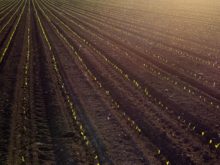Localized fertilization: is it dangerous for the seed?
This type of fertilization is strategic in terms of saving resources and time: issues of particular importance for farmers.
In recent times we have seen an increasing application of localized fertilization: a type of fertilizer distribution that is opposed to traditional fertilization. This type of fertilization is strategic in terms of saving resources and time: issues of particular importance for farmers.
Let's find out about localized fertilization and why choose this type of fertilization.
Is localized fertilization dangerous for the seed?
First of all, the localized fertilization does not appear to be dangerous for the seed. Although the microgranule is positioned in the sowing furrow and distributed in the immediate surroundings of the seed, this practice does not cause damage to the plant growth.
Actually, it can be said that the localized fertilization brings with it numerous benefits, like the starter effect. The nutrients are readily available for the crop from the birth phase and stimulate root growth, thus avoiding problems of non-solubilization and retrogradation of phosphorus.
Localized fertilization vs. Basic fertilization
Localized fertilization means that the microgranular distribution practice takes place simultaneously with sowing. In a single step, seeds and microgranules are distributed in the soil. Through a combined operation, the nutrients are concentrated in the place where they are most required, thus favouring the first root development.
In contrast to localized fertilization, traditional phosphate fertilization involves the full field distribution of granules (much larger than the DEMA microgranule). This type of fertilization fails in most cases to position the product near the seed and therefore involves numerous risks, such as:
- insolubilization,
- salinity damage,
- waste of product and therefore waste of valuable resources.
Advantages of the localized fertilization with the DEMA microgranule
Localized fertilization has several benefits:
- First of all, low product dosages. Locating the product in the sowing furrow means acting in a focused way, which implies a reduction in the quantity of product used.
- Saving of time and resources. Combining sowing operations with fertilization allows to reduce time and labour: no double treatment on the field and no machine downtime.
- Money saving. Reducing the quantity of product by locating the microgranule where the plant has the greatest need means optimizing the entire process, which translates into significant money saving.
Discover DEMA microgranular fertilizers for a quality localized fertilization.

